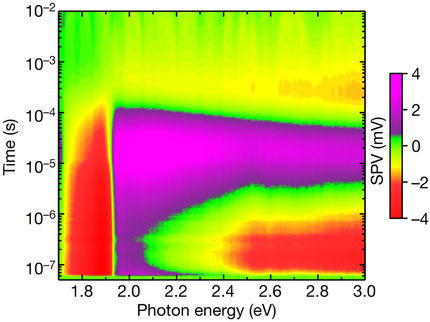Building new drugs just got easier
Scientists at The Scripps Research Institute (TSRI) have developed a method for modifying organic molecules that significantly expands the possibilities for developing new pharmaceuticals and improving old ones.
"This is a technology that can be applied directly to many medicinally relevant compounds," said Jin-Quan Yu, a professor in TSRI's Department of Chemistry and the senior author of the new report, which appears in Nature.
The innovation makes it easier to modify existing organic compounds by attaching biologically active "functional group" to drug molecules. A typical small-molecule drug derives its activity from such functional groups, which are bound to a relatively simple backbone structure consisting chiefly of carbon atoms.
Pushing the boundaries
Chemists over the past half-century or so have devised various methods for adding functional groups to carbon atoms, to make new compounds and to modify old ones. But a certain type of modification has remained largely out of reach.
Known as a "meta" C-H activation, this modification involves the temporary attachment of a helper molecule to one carbon atom, in such a way that the helper molecule extends past the nearest-neighbor carbon atom to the next-nearest carbon atom, and there mediates the addition of a functional group. It is a tricky task for a number of reasons, but mostly because the targeted attachment site is so far away and inaccessible. The carbon in the backbone of a typical organic compound is arranged in rings of six or so carbon atoms—and thus to reach from one such carbon over a second to a third means reaching almost to the far side of the ring.
In 2012, Yu and his colleagues published a landmark paper, also in Nature, which described a way to accomplish this feat with one set of compounds. They devised a helper molecule, with a long segment called a nitrile, that could attach to one carbon atom on the compound, arch over the next-door carbon atom, and in effect swing a palladium atom at its far end back—a bit like a crane swinging a wrecking ball—to the targeted carbon atom. There the palladium atom would act as a catalyst to dislodge the existing occupant, a hydrogen atom, enabling the attachment of the new functional group.
Following the same principle, Yu's team recently came up with a new template for making meta-C-H activations on a much more challenging set of organic compounds. Now, in the new study, the researchers have demonstrated the same task with a major family of compounds known as amines, including medicinally important heterocyclic amines. In so doing, the researchers found a way to use a helper molecule—also called a template—that is chemically simpler and more user-friendly than the ones they have described in previous work.
A boost to drug discovery
Unusually for such a project, the TSRI chemists analyzed the 3D atomic structure of their template compound using X-ray crystallography as well as nuclear magnetic resonance spectroscopy. These studies revealed that the new template's ability to mediate the attachment of a new functional group to a distant carbon atom can be "tuned" by making slight changes to its chemical composition, including the choice of the proper metal catalyst at its working end.
"The key is to tune the shape of the template to create a subtle bias towards the targeted carbon hydrogen bond," said Yu. "At the same time the template's movement towards the target site has to be exploited effectively by a super-reactive catalyst."
Compounds that can be modified using the new technique include tetrahydroquinoline, benzooxazines, anilines, benzylamines, 2-phenylpyrrolidines and 2-phenylpiperidines. "All these are commonly used in medicinal chemistry either as final drug compounds or intermediate compounds from which the final compounds are made," Yu said.
Yu is now collaborating with the pharmaceutical company Bristol-Myers Squibb to use his meta-C-H activation techniques to make potential new drug compounds.
"Techniques like this one that enable controlled, remote C-H activation are just beginning to be adopted by industry, and should provide a boost to drug discovery and development efforts for many years to come," Yu said.
Other news from the department science
Most read news
More news from our other portals
See the theme worlds for related content
Topic World Spectroscopy
Investigation with spectroscopy gives us unique insights into the composition and structure of materials. From UV-Vis spectroscopy to infrared and Raman spectroscopy to fluorescence and atomic absorption spectroscopy, spectroscopy offers us a wide range of analytical techniques to precisely characterize substances. Immerse yourself in the fascinating world of spectroscopy!

Topic World Spectroscopy
Investigation with spectroscopy gives us unique insights into the composition and structure of materials. From UV-Vis spectroscopy to infrared and Raman spectroscopy to fluorescence and atomic absorption spectroscopy, spectroscopy offers us a wide range of analytical techniques to precisely characterize substances. Immerse yourself in the fascinating world of spectroscopy!


























































